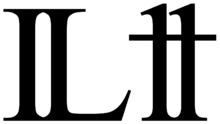This article needs additional citations for verification. (September 2019) |

A digraph (from Ancient Greek δίς (dís) 'double' and γράφω (gráphō) 'to write') or digram is a pair of characters used in the orthography of a language to write either a single phoneme (distinct sound), or a sequence of phonemes that does not correspond to the normal values of the two characters combined.
Some digraphs represent phonemes that cannot be represented with a single character in the writing system of a language, like ⟨ch⟩ in Spanish chico and ocho. Other digraphs represent phonemes that can also be represented by single characters. A digraph that shares its pronunciation with a single character may be a relic from an earlier period of the language when the digraph had a different pronunciation, or may represent a distinction that is made only in certain dialects, like the English ⟨wh⟩. Some such digraphs are used for purely etymological reasons, like ⟨ph⟩ in French.
In some orthographies, digraphs (and occasionally trigraphs) are considered individual letters, which means that they have their own place in the alphabet and cannot be separated into their constituent places graphemes when sorting, abbreviating, or hyphenating words. Digraphs are used in some romanization schemes, e.g. ⟨zh⟩ as a romanisation of Russian ⟨ж⟩.
The capitalisation of digraphs can vary, e.g. ⟨sz⟩ in Polish is capitalized ⟨Sz⟩ and ⟨kj⟩ in Norwegian is capitalized ⟨Kj⟩, while ⟨ij⟩ in Dutch is capitalized ⟨IJ⟩ and word initial ⟨dt⟩ in Irish is capitalized ⟨dT⟩.
Digraphs may develop into ligatures, but this is a distinct concept: a ligature involves the graphical fusion of two characters into one, e.g. when ⟨o⟩ and ⟨e⟩ become ⟨œ⟩, e.g. as in French cœur "heart".